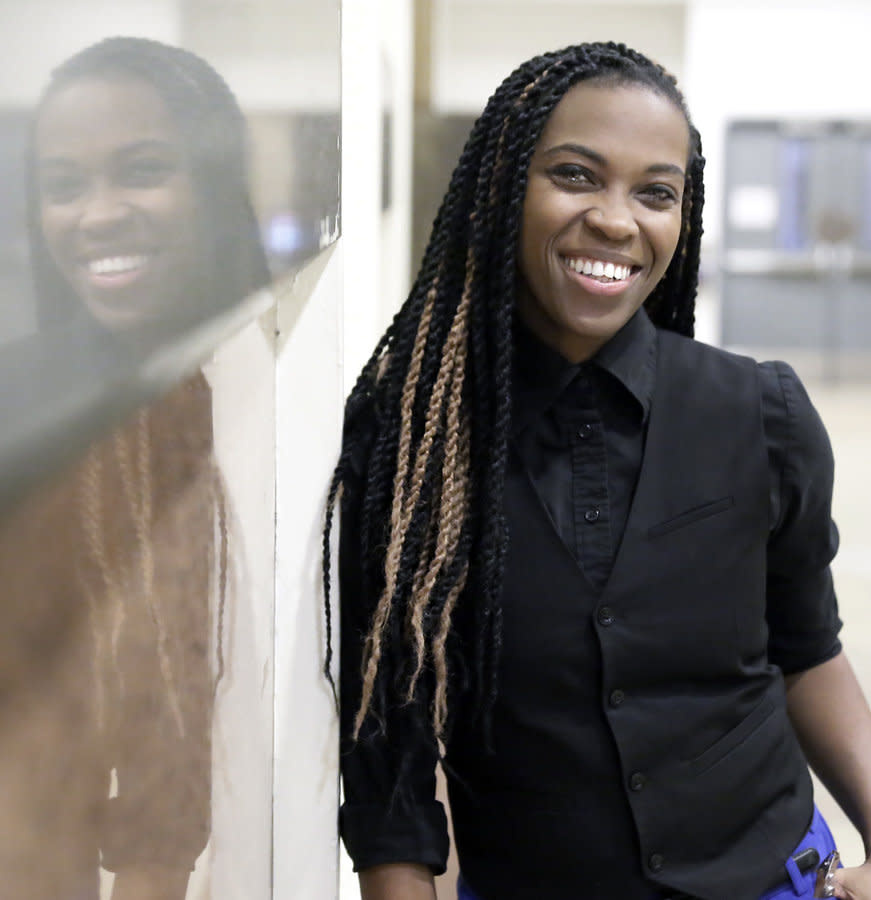Who gets to decide what belongs on the gay pride flag?
Amber Hikes knows Philadelphia’s LGBT community has many identities: black, white, Asian, Hispanic; Jewish, Christian, Muslim; foreign-born, American-born.
So how can one flag represent all these identities? Better yet: What does the ideal LGBT flag look like?
Hikes, a black queer woman and Philadelphia’s LGBT affairs director, last month officially added black and brown stripes atop the city’s pride flag — making Philadelphia the first city to do so — to recognize people of color who had long felt excluded.
As debate flared in another city, Chicago, about whether it’s appropriate to to include a Jewish star on the LGBT flag, Hikes spoke this week of why it’s important for the flag to embrace multitudes.
“The ideal rainbow flag is the one that represents you and your identity, whatever that may be,” said Hikes, who has batted off criticism that Philly’s new design is unnecessary or singles out people of color.
Chicago’s controversy started last month when organizers of the Dyke March kicked out three people carrying LGBT flags emblazoned with Jewish stars. The organizers said the flags were a ‘trigger’ that would offend those who associated the Star of David with the Israeli flag. The march’s politics are pro-Palestinian and anti-Zionist. Critics accused the organizers of being anti-Semitic.
Gretchen R. Hammond, the Windy City Times reporter who broke the story, said this week she had been transferred to the newspaper’s sales department after she was threatened by Dyke March officials and accused of betraying the LGBT community with the piece.
Gilbert Baker, a San Francisco artist, intended for all LGBT people to be included when he created the pride flag in 1978. It originally had eight colors but was reduced to six: red for life, orange for healing, yellow for sunlight, green for nature, blue for serenity, and violet for the human spirit.
Philadelphia’s pride flag changed after many people of color reported feeling unwelcome and discriminated against at bars and nonprofits in the Gayborhood. It came as no surprise — at least to people who aren’t white — when the Philadelphia Commission on Human Relations concluded racism has existed in the Gayborhood for decades.

Hikes views the new flag as a way to start conversations about race and identity, particularly with white people who have not experienced the same disparate treatment as people of color — and may be reluctant to believe it exists.
“It doesn’t make it less real just because you haven’t experienced it,” she said. “And that’s what’s so important.”
The city has also required bar owners and nonprofits to undergo training on fair business practices and implicit bias, and Hikes said more conversations will be needed.
Philly’s new pride flag created some backlash: Some people suggested there should be a white stripe, and the New York Post declared the flag had divided Philadelphia’s gay community.
But many others welcomed the change. Hikes has received calls from city officials in Los Angeles, New York City, and Atlanta wanting to use the flag. One gay rights group reached out wanting to carry it in a pride march next month — in Copenhagen.


